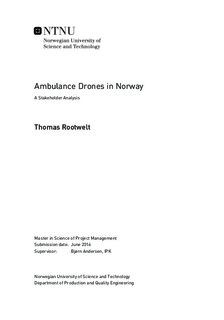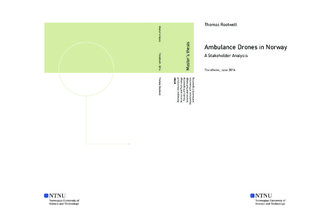| dc.description.abstract | Cardiac arrests claim millions of lives each year. The condition can often be treated with a de
fibrillator,buttimeisaverycriticalfactor. Asaconsequence,survivalratesarelow.
Recent developments in drone technology have made civilian drones both cheap, easy to
operate, and reliable. This paper looks into opportunities to use drones to deliver defibrilla
tors to cardiac arrest victims faster than an ambulance, and focuses on unifying the needs of
emergencyresponsewiththerulesandregulationsrequiredtooperatethedronessafely.
The study is performed as a literature study combined with interviews. The primary stake
holderswereidentifiedasemergencyresponseandtheCivilianAviationAuthority.
The results showed that there was both a perceived use for ambulance drones and a way to
legally use them. The suggested approach involves using ambulance drones at sporting events
such as "Birkebeinerrennet" as a proof of concept, before more advanced or permanent pro
gramsareconsidered. | |

